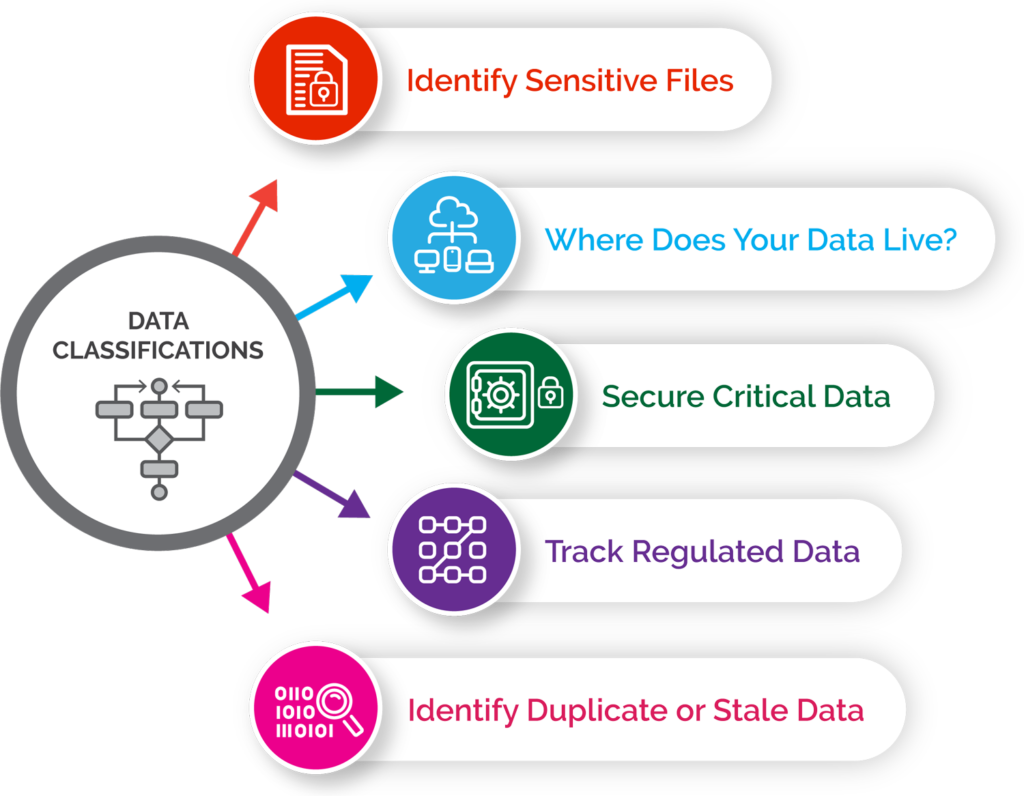
Is Today’s Changing Data Landscape Leaving Your Company Vulnerable?
Today’s business world is increasingly powered by data. Protecting it has never been more important, and keeping track of it has never been more challenging. As growing numbers of companies are working virtually and leveraging cloud applications and multi-clouds, data management is becoming more complex.
The data landscape is expanding, with roughly 92% of organizations having a multi-cloud strategy in place. This creates “data sprawl”, with files stored on multiple platforms. The result is an increased risk of dangerous data exposure. Backing up irreplaceable files in the cloud is essential for business continuity.
 Growing numbers of organizations now utilize cloud-based applications – a significant rise of 35% since 2022. Data creation is projected to continue to grow 35% each year, through 2025, and 1 in 5 employees have used personal apps to upload, create, share, and store sensitive company information, further complicating security risks.
Growing numbers of organizations now utilize cloud-based applications – a significant rise of 35% since 2022. Data creation is projected to continue to grow 35% each year, through 2025, and 1 in 5 employees have used personal apps to upload, create, share, and store sensitive company information, further complicating security risks.
Research shows that 71% of respondents believe data sprawl is a problem for their company which could lead to expensive fees associated with compliance and privacy breaches. Duplicated data backups waste money and create confusion. Additionally, if you are unable to keep track of your critical systems, applications, and data backups this can impact your recovery in a data disaster. Worst of all, data sprawl puts organizations at needless security risks, and legal exposures, and impacts your IT downtime. Each of these risks is costly to remediate and can even force companies out of business.
Steps to Rein in Data Sprawl
 Controlling data sprawl starts with a systematic approach. First, a business should establish a structure to classify data, and to manage applications and systems. Next, protect critical data, systems, and applications locally and in the cloud. Be sure to provide employees with tools, access standards, and policies to educate them on how to properly interact with company data. Finally, implement appropriate life cycle management policies.
Controlling data sprawl starts with a systematic approach. First, a business should establish a structure to classify data, and to manage applications and systems. Next, protect critical data, systems, and applications locally and in the cloud. Be sure to provide employees with tools, access standards, and policies to educate them on how to properly interact with company data. Finally, implement appropriate life cycle management policies.
Data classification is a critical, but often-overlooked, aspect of data security. Without a solid structure in place, it’s impossible to categorize data for easy, secure access. A good classification policy provides a framework for protecting data throughout its life cycle, including how and where it is created, stored, processed, and transmitted. It also catalogs where the data lives to ensure it is being backed up.
Classification is Key
 It’s important to clearly define the individuals within an organization who are responsible for each step of data classification, protection, and handling. Specifically, the delegation system should outline who will create policies, educate stakeholders, identify risks, and ensure compliance. Classification categories should reflect the sensitivity of data and outline how confidential assets are to be stored, moved, or processed.
It’s important to clearly define the individuals within an organization who are responsible for each step of data classification, protection, and handling. Specifically, the delegation system should outline who will create policies, educate stakeholders, identify risks, and ensure compliance. Classification categories should reflect the sensitivity of data and outline how confidential assets are to be stored, moved, or processed.
Major types of data might be classified according to their level of sensitivity. For example, you might use a four-step system based on the potential damage that would be caused in case of a breach.
- Public – Data that can be freely shared with the public, such as marketing materials, website content, and contact information.
- Internal – Information that is not intended for public disclosure, such as sales playbooks or organizational charts.
- Confidential – sensitive data that might negatively impact the company if widely disclosed. This information might include vendor contacts and employee/HR data, which businesses are legally bound to safeguard.
- Restricted – Highly sensitive business and customer data that would put the company at financial or legal risk, such as intellectual property, HIPPA-protected data, credit card information and social security, and other personal, identifiable information.
 Careful consideration of all this data and how it’s managed, stored, and shared may seem a daunting task. But simply addressing the basics will provide a baseline of security and peace of mind.
Careful consideration of all this data and how it’s managed, stored, and shared may seem a daunting task. But simply addressing the basics will provide a baseline of security and peace of mind.
With this information in hand, you can easily begin to apply a four-step management system to elevate the security of all data assets. Identify where your data, hardware, and software assets live. Classify each data set according to its importance. Test and document a plan to mitigate the impact of unexpected events. Finally, protect your data, applying budget where it matters most.
For a free consultation, call us at 1.877-834-3684 or email us at info@renovodata.com.
RenovoData is a leading regulatory-compliant, cloud data protection IT services company. Our solutions range from File and Database Backup, Server Recovery, Disaster Recovery as a Service (DRaaS), Custom Cloud Hosting and Consulting solutions for on-premises and hosted environments.

